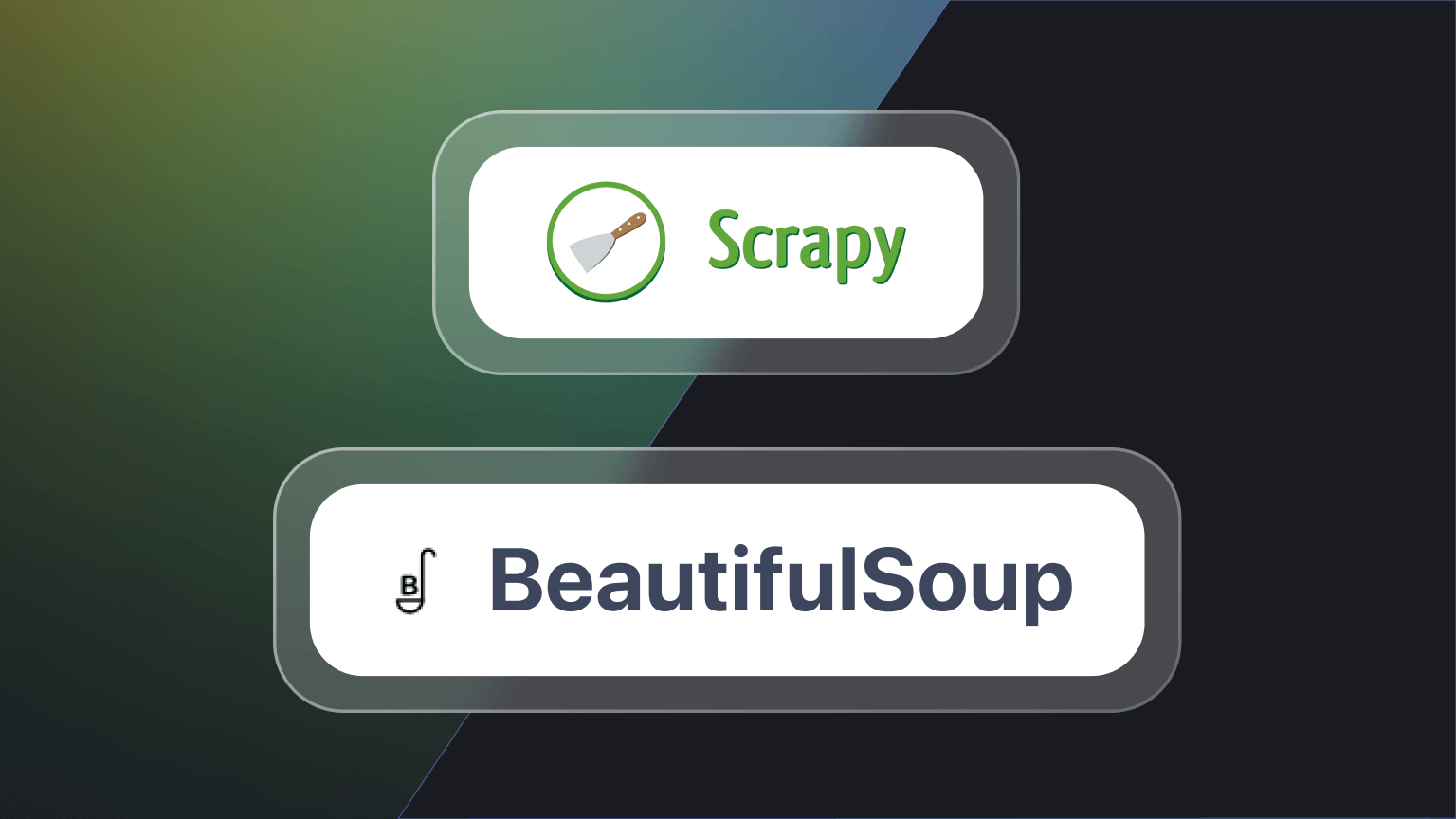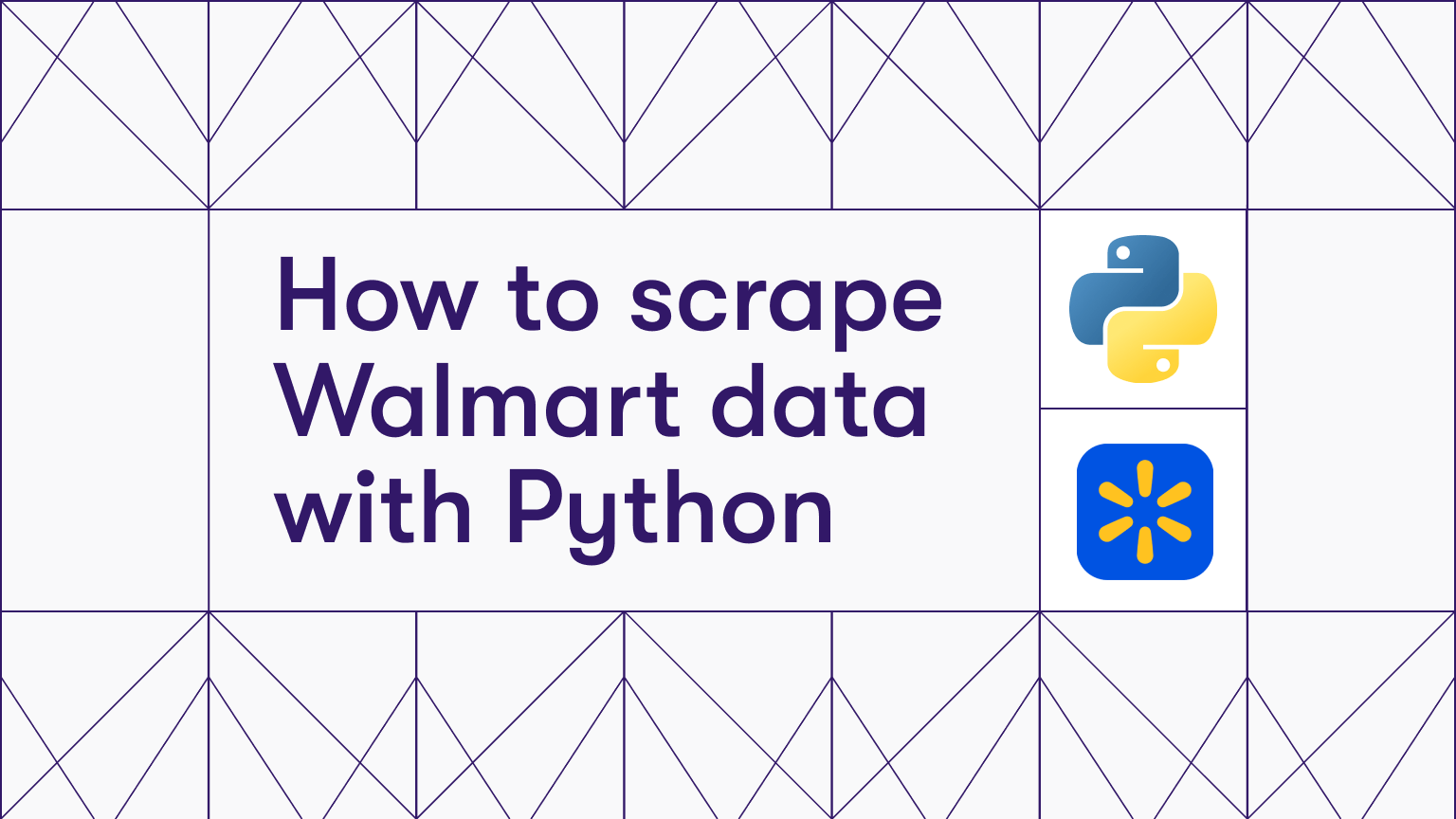User feedback is everything these days, which makes access to user review data indispensable for analyzing customer sentiment, tracking competitors, and studying customer expectations.
Google Maps is one of the most popular websites for users to leave reviews of the places they’ve visited. That's why we'll show you exactly how to automatically scrape reviews from Google Maps by using Python.
We’ll guide you through every step - from setting up your project to deploying your Google reviews scraper on the Apify platform.
Why scrape Google reviews?
The information you can scrape from Google reviews provides helpful data for both businesses and individuals: user ratings, photos, review text, and more. Specifically, this data can be utilized to:
- Improve services: Identify common issues and highlight aspects of your business that customers appreciate. This will help you make informed decisions about service improvements.
- Achieve better experiences: Understand what aspects of your service or location resonate with customers, and pinpoint areas for improvement based on their feedback.
- Find the best places: Harness the review data to identify the top-rated locations for a specific keyword in your area.
- Study the market: Monitor the language customers use to describe other businesses to understand how people react to specific issues and what they tend to love.
- Track competitors: Analyze competitors' reviews using a Google review widget to understand their strengths and weaknesses and shape your business strategy accordingly.
How to scrape Google reviews using Python
In this tutorial, the target page will be the reviews section for the Apple Fifth Avenue store in New York:
The scraping process will involve these steps:
- Setup and prerequisites
- Connect to the target page
- Locate and select the review HTML elements
- Implement the scraping logic
- Collect the scraped data
- Export the data to CSV
- View the complete code
- Deploy the scraper to Apify
In detail, you’ll learn how to extract the following details from each review:
- The user’s profile URL
- The username
- The review rating (number of stars)
- The review text
At the end, we'll also show you how to use a ready-made Google Maps Reviews scraper on the Apify platform.
Let’s begin.
1. Setup and prerequisites
To follow along with this tutorial, verify that you meet these prerequisites:
- A basic understanding of how the web works
- Familiarity with the DOM, HTML, and CSS selectors
- Some knowledge of AJAX and how dynamic, interactive web pages behave
Since this Google Maps reviews scraping guide uses Python, you'll also need:
- Python 3+ installed on your machine
- A Python IDE such as Visual Studio Code with the Python extension or PyCharm
- Basic knowledge of Python and asynchronous programming
Start by creating a new folder for your scraper and setting up a virtual environment inside it:
mkdir google-reviews-scraper
cd google-reviews-scraper
python -m venv venv
To activate the virtual environment on Windows, execute:
venv\Scripts\activate
Equivalently, on Linux/macOS, run:
source venv/bin/activate
In an activated virtual environment, install the necessary libraries to scrape Google reviews:
pip install playwright
After installing Playwright, don’t forget to download the required browser binaries and dependencies with:
python -m playwright install
This will install everything Playwright needs to run browser sessions properly.
Finally, open your project in your IDE and create a file named scraper.py to start implementing the scraping logic.
2. Connect to the target page
Open your browser in incognito (to ensure a new session), go to Google Maps, and search for the place you want to scrape reviews from. For example, try searching for “apple store”:
Select the specific store you’re interested in - in this case, Apple Fifth Avenue - and click on the “Reviews” tab:
Once the review section loads, the URL in the browser address bar will update to something like this:
https://www.google.com/maps/place/Apple+Fifth+Avenue/@40.8391069,-74.2188908,10z/data=!4m12!1m2!2m1!1sapple+store!3m8!1s0x89c258f0741ceda7:0x4fd23cddb7a3d144!8m2!3d40.7638478!4d-73.9729785!9m1!1b1!15sCgthcHBsZSBzdG9yZSIDiAEBWg0iC2FwcGxlIHN0b3JlaAGSARFlbGVjdHJvbmljc19zdG9yZeABAA!16s%2Fg%2F1yl47t1xt?entry=ttu&g_ep=EgoyMDI1MDQwOC4wIKXMDSoASAFQAw%3D%3D
Copy the URL, as that will be the target page that your Google reviews scraper will visit.
Now, open your scraper.py file and add the following code:
import asyncio
from playwright.async_api import async_playwright
async def run():
async with async_playwright() as p:
# initialize a new Playwright instance
browser = await p.chromium.launch(
headless=False # Set to True in production
)
context = await browser.new_context()
page = await context.new_page()
# The URL of the Google Maps reviews page
url = "https://www.google.com/maps/place/Apple+Fifth+Avenue/@40.8391069,-74.2188908,10z/data=!4m12!1m2!2m1!1sapple+store!3m8!1s0x89c258f0741ceda7:0x4fd23cddb7a3d144!8m2!3d40.7638478!4d-73.9729785!9m1!1b1!15sCgthcHBsZSBzdG9yZSIDiAEBWg0iC2FwcGxlIHN0b3JlaAGSARFlbGVjdHJvbmljc19zdG9yZeABAA!16s%2Fg%2F1yl47t1xt?entry=ttu&g_ep=EgoyMDI1MDQwOC4wIKXMDSoASAFQAw%3D%3D"
# Navigate to the target Google Maps page
await page.goto(url)
# Close the browser and release its resources
await browser.close()
if __name__ == "__main__":
asyncio.run(run())
This script imports Playwright’s asynchronous API, uses it to launch a browser, navigate to the copied Google Maps URL, and then closes the browser cleanly.
Add a debugger breakpoint on browser.close(), and run the script in the debugger. This is what you should see:
Playwright opens a Chromium browser and navigates to the desired Google Maps place in the “Reviews” section.
3. Identify and select the review HTML elements
Before diving into the scraping logic, you’ll need a data structure to store the scraped reviews. Since a single Google Maps place can have multiple reviews, an array is a good fit:
reviews = []
Place this line at the top of the run() function, outside the async block.
Next, you need to inspect the HTML structure of the target page to identify the elements containing review data. In the Google Maps reviews page, right-click on one of the reviews, and select “Inspect” to open the browser's DevTools:
If you're not familiar with this process, read our guide on finding elements with DevTools.
As you examine the HTML, you’ll notice that many of the class names appear randomly generated - likely due to build-time obfuscation. That means you can’t rely on class names for selecting elements, as they’re prone to change across deployments.
Instead, focus on HTML attributes. In this case, each review is wrapped in a <div> element that includes both a data-review-id and a jsaction attribute. Those HTML attributes are uncommon enough to be used in a successful selector.
Thus, the CSS selector for targeting review elements becomes:
div[data-review-id][jsaction]
Use Playwright’s locator() method to apply this selector:
review_html_elements = page.locator("div[data-review-id][jsaction]")
Because these elements are loaded dynamically via AJAX, add a wait instruction to check that at least one is visible before proceeding:
await review_html_elements.first.wait_for(state="visible")
You can now iterate through the list of selected elements and get ready to scrape Google reviews:
for review_html_element in await review_html_elements.all():
# Scraping logic...
4. Implement the scraping logic
Start by inspecting the HTML element that contains the user information for each review:
To select that element, you need the following CSS selector:
button[data-href*="/maps/contrib/"]:not([aria-label])
This targets a <button> element that has a data-href attribute containing the /maps/contrib/ string. The selector also excludes buttons with an aria-label attribute, as a similar <button> is used to display the user's profile image.
From the image above, you can see that the user's name is located inside the first <div> element under that button. So, you can extract the profile URL and username with:
user_contrib_element = review_html_element.locator("button[data-href*=\"/maps/contrib/\"]:not([aria-label])")
user_url = await user_contrib_element.get_attribute("data-href")
username_element = user_contrib_element.locator("div").first
username = await username_element.text_content()
Note the use of the following two Playwright methods for data extraction:
get_attribute(): Retrieves the value of a specified HTML attribute.text_content(): Gets the visible text from the current locator.
Now, focus on the star rating:
The easiest way to get that information is by selecting the element whose aria-label attribute includes the word “star”:
stars_element = review_html_element.locator("[aria-label*=\"star\"]")
With some custom logic, you can get the review score by looking at the number (from 1 to 5) contained inside the aria-label text:
stars_label = await stars_element.get_attribute("aria-label")
# Extract the review score from the stars label
stars = None
for i in range(1, 6):
if stars_label and str(i) in stars_label:
stars = i
break
In the previous image, see how the review time info element is the next sibling after the stars node. Since CSS doesn’t provide a simple way to get siblings, it’s better to rely on XPath instead:
time_sibling = stars_element.locator("xpath=following-sibling::span")
time = await time_sibling.text_content()
Finally, focuses on the review text node. Reviews often contain long text, which is initially truncated and can be expanded with a “More” button:
To access the full review, you first need to click the “More” button you can identify by targeting its aria-label content. Then, extract the full text from the surrounding container that has this CSS selector:
div[tabindex="-1"][id][lang]
Remember that not all reviews have a “More” button. So, you need to click the button only if it actually visible:
more_element = review_html_element.locator("button[aria-label=\"See more\"]")
if await more_element.count() > 0:
await more_element.click()
Next, retrieve the review text with:
text_element = review_html_element.locator("div[tabindex=\"-1\"][id][lang]")
text = await text_element.text_content()
5. Collect the scraped data
At this point, you have all the scraped data stored in Python variables. Use them to define a dictionary representing a single review, and then append it to the reviews list:
review = {
"user_url": user_url,
"username": username,
"stars": stars,
"time": time,
"text": text
}
reviews.append(review)
This is the final step inside your for loop to scrape Google reviews.
6. Export to CSV
Outside the for loop - and after the async Playwright block - use Python’s built-in csv module to export the scraped reviews to CSV:
with open("google_maps_reviews.csv", mode="w", newline="", encoding="utf-8") as f:
writer = csv.DictWriter(f, fieldnames=["user_url", "username", "stars", "time", "text"])
writer.writeheader()
writer.writerows(reviews)
This will create a google_maps_reviews.csv file, add a header row to it, and then populate it with the review data from the reviews list.
7. Complete code
Your scraper.py file should now contain:
import asyncio
from playwright.async_api import async_playwright
import csv
async def run():
# Where to store the scraped data
reviews = []
async with async_playwright() as p:
# Initialize a new Playwright instance
browser = await p.chromium.launch(
headless=False # Set to True in production
)
context = await browser.new_context()
page = await context.new_page()
# The URL of the Google Maps reviews page
url = "https://www.google.com/maps/place/Apple+Fifth+Avenue/@40.8391069,-74.2188908,10z/data=!4m12!1m2!2m1!1sapple+store!3m8!1s0x89c258f0741ceda7:0x4fd23cddb7a3d144!8m2!3d40.7638478!4d-73.9729785!9m1!1b1!15sCgthcHBsZSBzdG9yZSIDiAEBWg0iC2FwcGxlIHN0b3JlaAGSARFlbGVjdHJvbmljc19zdG9yZeABAA!16s%2Fg%2F1yl47t1xt?entry=ttu&g_ep=EgoyMDI1MDQwOC4wIKXMDSoASAFQAw%3D%3D"
# Navigate to the target Google Maps page
await page.goto(url)
# Selecting the review HTML elements for the specific page
review_html_elements = page.locator("div[data-review-id][jsaction]")
# Wait for the element to be loaded and visible on the page
await review_html_elements.first.wait_for(state="visible")
# Iterate over the elements and scrape data from each of them
for review_html_element in await review_html_elements.all():
# Scraping logic
user_contrib_element = review_html_element.locator("button[data-href*=\"/maps/contrib/\"]:not([aria-label])")
user_url = await user_contrib_element.get_attribute("data-href")
username_element = user_contrib_element.locator("div").first
username = await username_element.text_content()
stars_element = review_html_element.locator("[aria-label*=\"star\"]")
stars_label = await stars_element.get_attribute("aria-label")
# Extract the review score from the stars label
stars = None
for i in range(1, 6):
if stars_label and str(i) in stars_label:
stars = i
break
# Get the next sibling of the previous element with an XPath expression
time_sibling = stars_element.locator("xpath=following-sibling::span")
time = await time_sibling.text_content()
# Select the "More" button and if it is present, click it
more_element = review_html_element.locator("button[aria-label=\"See more\"]")
if await more_element.count() > 0:
await more_element.click()
text_element = review_html_element.locator("div[tabindex=\"-1\"][id][lang]")
text = await text_element.text_content()
# Populate a new object with the scraped data and append it to the list
review = {
"user_url": user_url,
"username": username,
"stars": stars,
"time": time,
"text": text
}
reviews.append(review)
# Close the browser and release its resources
await browser.close()
# Export to CSV
with open("google_maps_reviews.csv", mode="w", newline="", encoding="utf-8") as f:
writer = csv.DictWriter(f, fieldnames=["user_url", "username", "stars", "time", "text"])
writer.writeheader()
writer.writerows(reviews)
if __name__ == "__main__":
asyncio.run(run())
As you can see, it's possible to build a simple Google Reviews scraper with just a few lines of Python code.
To test your script, execute:
python scraper.py
If you configured Playwright to run in GUI mode, a browser window will open and navigate to the target Google Maps reviews page. Then, the script will start scraping the review data. A google_maps_reviews.csv file will appear in the project’s folder. Open that file, and you'll see the scraped results:
Wonderful! Your Python script to scrape Google reviews is working like a charm.
8. Deploy to Apify
Deploying your scraper to Apify gives you access to infrastructure, such as anti-blocking features, scheduling, and integrations. It involves turning your scraper into an Actor so you can make it publicly available on Apify Store and earn passive income from those who need your solution.
To deploy your Google reviews scraper to Apify, you need:
- An Apify account
- A basic understanding of how Apify works
To create a new Google reviews scraping project on Apify:
- Log in to your Apify account
- Go to Apify Console
- Under the "Actors" dropdown, select "Development," and then press the “Develop new” button:
Next, click the “View all templates” button to see all Apify templates:
In the Python section, select the “Playwright + Chrome” template, as that is the setup we used in this tutorial:
Review the starter project code and click “Use this template” to create your own copy:
You’ll then be taken to Apify’s built-in online IDE:
There, you can customize your Actor by writing your Google reviews scraping logic directly in the cloud.
Inside main.py, you’ll find some starter code that reads the target URLs from Apify input arguments. The script then uses Playwright to launch a browser and navigate to the specified page.
From there, integrate the scraping logic you wrote in steps 3, 4, and 5 of this tutorial. Put everything together, and you’ll end up with the following Apify Actor code:
from __future__ import annotations
from urllib.parse import urljoin
from apify import Actor, Request
from playwright.async_api import async_playwright
async def main() -> None:
async with Actor:
# Retrieve the Actor input, and use default values if not provided
actor_input = await Actor.get_input() or {}
start_urls = actor_input.get("start_urls")
# Exit if no start URLs are provided
if not start_urls:
Actor.log.info("No start URLs specified in actor input, exiting...")
await Actor.exit()
# Open the default request queue for handling URLs to be processed
request_queue = await Actor.open_request_queue()
# Enqueue the start URLs
for start_url in start_urls:
url = start_url.get("url")
Actor.log.info(f"Enqueuing {url} ...")
new_request = Request.from_url(url)
await request_queue.add_request(new_request)
# Launch Playwright and open a new browser context
async with async_playwright() as playwright:
# Configure the browser to launch in headless mode as per Actor configuration
browser = await playwright.chromium.launch(
headless=Actor.config.headless,
args=["--disable-gpu"],
)
context = await browser.new_context()
# Process the URLs from the request queue
while request := await request_queue.fetch_next_request():
# The URL of the Google Maps reviews page
url = request.url
page = await context.new_page()
# Navigate to the target Google Maps page
await page.goto(url)
# Selecting the review HTML elements for the specific page
review_html_elements = page.locator("div[data-review-id][jsaction]")
# Wait for the element to be loaded and visible on the page
await review_html_elements.first.wait_for(state="visible")
# Iterate over the elements and scrape data from each of them
for review_html_element in await review_html_elements.all():
# Scraping logic
user_contrib_element = review_html_element.locator("button[data-href*=\"/maps/contrib/\"]:not([aria-label])")
user_url = await user_contrib_element.get_attribute("data-href")
username_element = user_contrib_element.locator("div").first
username = await username_element.text_content()
stars_element = review_html_element.locator("[aria-label*=\"star\"]")
stars_label = await stars_element.get_attribute("aria-label")
# Extract the review score from the stars label
stars = None
for i in range(1, 6):
if stars_label and str(i) in stars_label:
stars = i
break
# Get the next sibling of the previous element with an XPath expression
time_sibling = stars_element.locator("xpath=following-sibling::span")
time = await time_sibling.text_content()
# Select the "More" button and if it is present, click it
more_element = review_html_element.locator("button[aria-label=\"See more\"]")
if await more_element.count() > 0:
await more_element.click()
text_element = review_html_element.locator("div[tabindex=\"-1\"][id][lang]")
text = await text_element.text_content()
# Populate a new object with the scraped data and append it to the list
review = {
"user_url": user_url,
"username": username,
"stars": stars,
"time": time,
"text": text
}
# Store the extracted data in the default dataset
await Actor.push_data(review)
# Close the page in the browser
await page.close()
# Mark the request as handled to ensure it is not processed again
await request_queue.mark_request_as_handled(request)
Note that you no longer need the CSV export logic, as that's handled push_data() method:
await Actor.push_data(review)
This method lets you retrieve the scraped data via the API or export it in various formats directly from the Apify dashboard.
Next, click the “Save, Build & Start” button:
Go to the “Input” tab and enter the target Google Maps URL manually:
Click “Save & Start” to run your Google reviews scraper Actor. Once the run is over, the results should look like this:
Switch to the “Storage” tab:
From here, you can export your scraped data in multiple formats—including JSON, CSV, XML, Excel, HTML Table, RSS, and JSONL.
Et voilà! You’ve successfully scraped Google reviews on the Apify platform.
9. Next steps
This tutorial has walked you through the basics of scraping reviews from Google Maps. To take your scraper to the next level, consider implementing these advanced techniques:
- Automated search navigation: Extend your Python web browser automation logic to visit Google Maps and search for the desired places for you. That reduces manual input and helps mimic real user behavior, lowering the risk of detection or blocking.
- Load more reviews: Currently, the scraper only captures the initial set of visible reviews. By simulating scroll behavior and waiting for the page to load more content dynamically, you can collect a much larger dataset.
- Proxy integration: Use proxy servers to rotate IP addresses and avoid rate limits or blocks. You can explore Apify’s built-in proxy tools or integrate your own. Discover more in the official documentation.
Use a ready-made Google reviews scraper
Scraping reviews from Google Maps can be more complicated than what we've demoed in this article. When retrieving data at scale, you’ll have to deal with anti-scraping measures like rate limiters, IP bans, CAPTCHAs, and more.
The easiest way to overcome these obstacles is by using a pre-built Google reviews scraper that handles everything for you. Some benefits of this approach include:
- No coding required: Start scraping instantly and with no technical knowledge required.
- Block bypass: Avoid IP bans and CAPTCHAs automatically.
- API access: Easily integrate scraped data into your applications.
- Scalability: Handle large volumes of reviews with no effort.
- Regular updates: Stay compliant with Google’s latest changes.
- Reliable data extraction: Minimize errors and inconsistencies.
Apify offers thousands of Actors for various websites, including nearly 250 specifically for Google. If you're interested in scraping reviews from Google Maps without building a scraper yourself, simply visit Apify Store and search for the "google reviews" keyword:
Select the “Google Maps Reviews Scraper" Actor, then click "Try for free" on its public page:
The Actor will be added to your personal Apify dashboard. Configure it as needed, then click "Save & Start" to launch the Actor:
Wait for the Actor to finish, and enjoy your review data from Yellowstone National Park (the default location you can visually modify in the Apify platform in the “Input” section):
And that’s it! You’ve successfully scraped review data from Google Maps with just a few clicks.
Conclusion
In this tutorial, you used Playwright with Python to build a Google reviews scraper that automates the extraction of review data from Google Maps. You focused on scraping reviews from a popular location and successfully deployed the scraper to Apify.
This project demonstrated how Apify helps streamline development by enabling scalable, cloud-based scraping with minimal setup. Feel free to explore other Actor templates and SDKs to expand your automation toolkit.
As shown in this blog post, using a ready-made Google Maps Reviews Scraper is the most efficient way to collect review data effectively and at scale.
Frequently asked questions
Can you scrape Google reviews?
Yes, you can scrape Google reviews, but it requires using a browser automation tool like Selenium, Playwright, or Puppeteer. That's because Google Maps is highly interactive. Also, Google has recently cracked down on traditional scrapers that rely on HTTP clients and HTML parsers.
Is it legal to scrape reviews from Google?
Yes, it’s legal to scrape reviews from Google since they're publicly available data. However, for full legal protection, you may also want to review and comply with Google’s Terms and Conditions, as scraping can sometimes violate platform policies even if that isn’t against the law. You can learn more in this comprehensive guide to the legality of web scraping.
How to scrape Google reviews?
To scrape Google reviews, use a headless browser controlled via a browser automation API like Playwright or Selenium. These tools let you load the Google Maps page, scroll through reviews, extract elements like usernames and ratings, and export the data to CSV or JSON.







